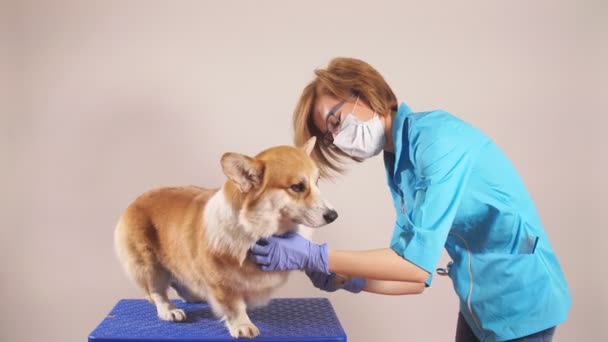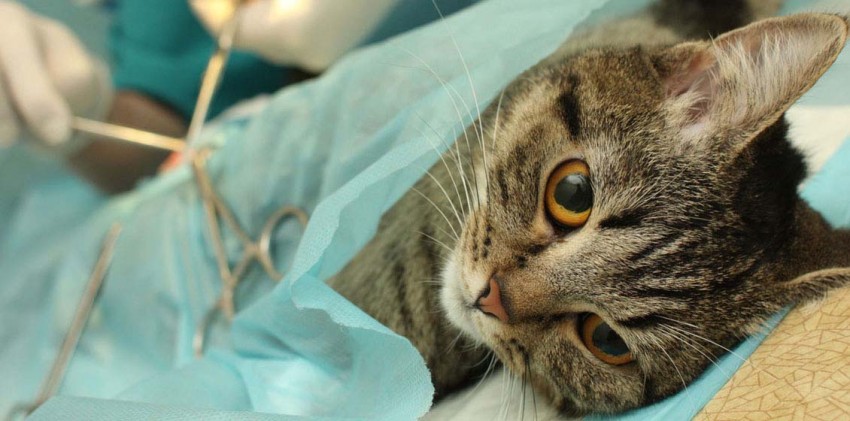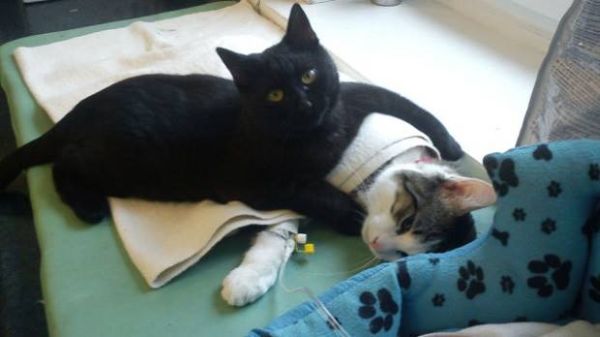Blood in the feces of a dog: causes and treatment
 Sudden bloody diarrhea (sometimes with vomiting) is often the first sign of hemorrhagic gastroenteritis (HGE) in dogs that causes gastrointestinal bleeding. The disease, in addition to bloody diarrhea, can also be accompanied by vomiting and other symptoms. The disease develops very quickly.
Sudden bloody diarrhea (sometimes with vomiting) is often the first sign of hemorrhagic gastroenteritis (HGE) in dogs that causes gastrointestinal bleeding. The disease, in addition to bloody diarrhea, can also be accompanied by vomiting and other symptoms. The disease develops very quickly.
If you notice blood in the dog’s feces, it is important to immediately go to the veterinary clinic. In Moscow, in the area of the Exhibition of Economic Achievements, the Constellation Veterinary Center operates around the clock. Despite the fact that feces in the blood can be a sign of many diseases, this symptom is very alarming and requires active treatment. If bloody diarrhea is not treated, the disease can lead to the death of the dog. However, with timely treatment, most dogs recover in a few days.
Signs and symptoms of HGE
The most noticeable symptom observed in hemorrhagic gastroenteritis in dogs is the sudden onset of bloody diarrhea in a previously healthy dog. The color of the feces is often bright red, and many owners compare it with raspberry jam. The smell of feces is often offensive, significantly different from the smell of feces in normal.
Other common symptoms of HEP include vomiting, loss of appetite and lethargy. Dehydration is usually not observed in dogs, but without treatment, shock can develop quickly. Some dogs may have fever, although this is not very common.
Since dogs can have many causes of vomiting and diarrhea, it is always recommended to immediately go to a veterinary clinic to rule out complicated cases and, if necessary, start treatment in time. Only in the clinic is it possible to accurately establish the diagnosis.
Causes of HGE
The exact cause of hemorrhagic gastroenteritis in dogs is unknown, although there are a number of theories. These include an adverse reaction to a change in diet, bacterial or viral infections, a reaction to intestinal parasites. In addition, it is believed that stress or hypersensitivity may play a role in the development of HGE.
Dogs that have previously been diagnosed with HGE may be prone to relapse of the disease. However, many dogs never suffer from HGE.
High risk dogs
HGE is found among all dog breeds and at any age. Does not depend on gender. The first case of HGE may occur in dogs aged 2 to 5 years.
Higher risk in dogs of miniature breeds. In particular,
Yorkshire Terriers
Maltese lapdogs
Dwarf Pinschers
Miniature Schnauzer
Dwarf Poodles
Diagnostics
HGE is diagnosed primarily by eliminating other causes of bloody diarrhea. The sudden appearance of bloody diarrhea and elevated hematocrit in a previously healthy dog speaks in favor of the diagnosis of “hemorrhagic gastroenteritis.”
Other causes of gastrointestinal bleeding in dogs
Stomach ulcer or cancer
Colitis
Parvovirus enetrit
Coronavirus enteritis
Various bacteria, such as Campylobacter sp, Salmonella sp, Clostridium sp and Escherichia coli.
Leptospirosis
Nematodes (round worms)
Coccidiosis
Giardiasis
Poisoning with rat poison
Thrombocytopenia
Hypoadrenocorticism
Treatment and recovery
If your dog is diagnosed with HGE, it is likely that you will need to stay in the hospital for dogs for several days. This is due to the fact that during treatment requires intensive therapy, which can be impossible to provide at home.
In the first days of treatment with HGE, dogs usually refuse to eat or drink for one to four days. In the hospital, dogs receive intravenous nutrition with the addition of potassium. The use of antibiotics, also carried out by intravenous or subcutaneous injections, is also recommended.
A gradual return to normal nutrition is recommended. If the development of HGE is associated with food, you may need to switch to a new source of protein (for example, chicken, lamb or cottage cheese), which the dog usually does not eat.
The good news is that with intensive therapy, most dogs recover within a few days. Some dogs may have HGE episodes. Ask your doctor about how to reduce the risk of HGE recurrence in a recovered dog.



